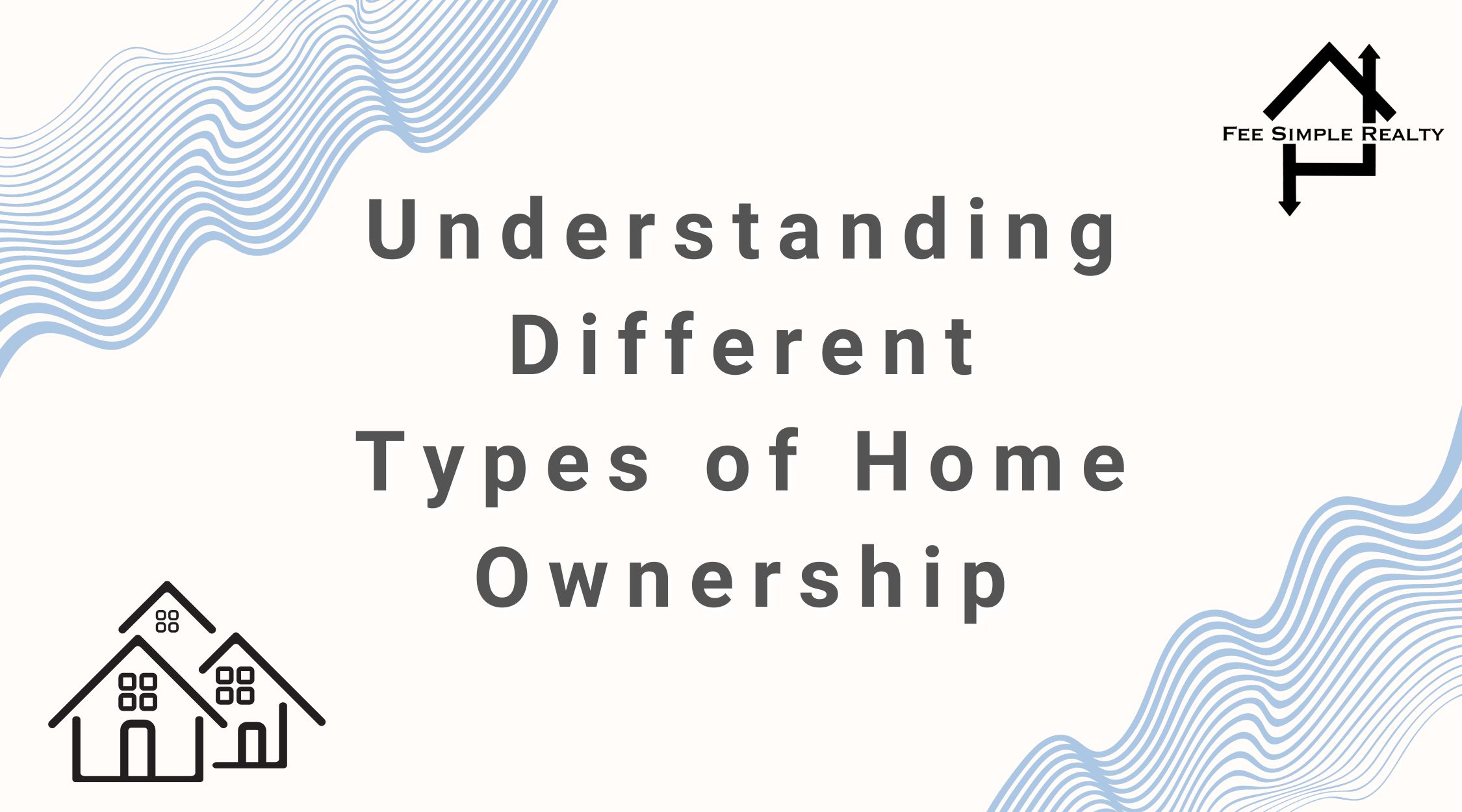Understanding Different Types of Home Ownership
When purchasing a home, it’s crucial to understand the various types of home ownership available. Each type has its own set of rights, responsibilities, and implications for owners. This guide will help you navigate the different types of home ownership, so you can make an informed decision that best suits your needs and goals.
Overview: Types of Home Ownership
Types:
- Fee Simple Ownership
- Leasehold Ownership
- Condominium Ownership
- Co-Op Ownership
- Joint Tenancy
- Tenancy in Common
Detailed Breakdown: Types of Home Ownership
1. Fee Simple Ownership
Simple Explanation: Full ownership of the property and the land it sits on.
In-Depth Analysis: Fee simple ownership is the most common and comprehensive form of property ownership. As a fee simple owner, you have complete control over the property and the land, with the right to use it, sell it, lease it, or bequeath it. This type of ownership offers the greatest degree of freedom and security, making it ideal for most homebuyers.
Features:
- Full ownership rights
- Complete control over the property
- Ability to sell, lease, or bequeath the property
2. Leasehold Ownership
Simple Explanation: Ownership of the property for a specified period, but not the land.
In-Depth Analysis: In a leasehold ownership, you own the property but lease the land it sits on from the landowner for a specified period, often ranging from 30 to 99 years. At the end of the lease, ownership of the land reverts to the landowner. Leasehold properties can be less expensive upfront, but they come with ground rent and lease renewal negotiations, which can add complexity.
Features:
- Ownership of the property, but not the land
- Lease period with ground rent payments
- Potential lease renewal or expiration
3. Condominium Ownership
Simple Explanation: Ownership of a unit within a multi-unit building and a share of common areas.
In-Depth Analysis: Condominium ownership, or condo ownership, means you own a specific unit within a larger building or complex, along with a proportional share of common areas such as hallways, pools, and gyms. Condo owners pay monthly fees to a homeowners association (HOA) for maintenance and management of these common areas. This type of ownership offers a blend of private ownership and shared community living.
Features:
- Ownership of a specific unit
- Shared ownership of common areas
- Monthly HOA fees
4. Co-Op Ownership
Simple Explanation: Ownership of shares in a corporation that owns the property.
In-Depth Analysis: In a co-op ownership, you don’t own a specific unit. Instead, you own shares in a cooperative corporation that owns the entire property. Your shares entitle you to occupy a specific unit and participate in the management of the building. Co-op ownership involves more stringent approval processes and rules, as the co-op board must approve new buyers and residents.
Features:
- Ownership of shares in a corporation
- Right to occupy a specific unit
- Co-op board approval required
5. Joint Tenancy
Simple Explanation: Co-ownership with equal shares and rights of survivorship.
In-Depth Analysis: Joint tenancy is a form of co-ownership where two or more individuals own a property together with equal shares. One of the key features of joint tenancy is the right of survivorship, meaning that if one owner dies, their share automatically passes to the surviving owners. This type of ownership is common among married couples and close family members.
Features:
- Equal ownership shares
- Right of survivorship
- Common among close relations
6. Tenancy in Common
Simple Explanation: Co-ownership without rights of survivorship.
In-Depth Analysis: Tenancy in common allows two or more individuals to co-own a property, but with the flexibility to own unequal shares. Unlike joint tenancy, there is no right of survivorship; each owner can bequeath their share to heirs or sell it independently. This type of ownership is suitable for business partners or individuals who want to invest in a property together while maintaining separate interests.
Features:
- Flexible ownership shares
- No right of survivorship
- Suitable for business partnerships
Conclusion
Understanding the different types of home ownership is crucial for making an informed decision when purchasing property. Each type offers distinct rights, responsibilities, and implications, from the complete control of fee simple ownership to the shared community living of condos and co-ops. By understanding these options, you can choose the type of ownership that best aligns with your needs, goals, and lifestyle, especially in diverse markets like Central Florida.
Other Related Topics
If you found this information helpful, you might also be interested in learning about the impact of property location on real estate value, how to finance your first investment property, or the benefits of green building and sustainable homes. Stay tuned for more insightful real estate posts!
Contact us today or visit our Instagram | Facebook .
